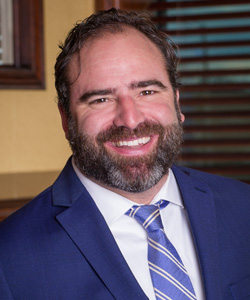Treat Legg–Calvé–Perthes Disease at MidAmerica’s Palos Hills & Mokena Locations

Legg–Calvé–Perthes disease (LCPD) is a hip disorder caused by a disruption of blood flow to the femoral head. Lack of an adequate blood supply causes the head of the femur to die. This condition is rare and affects only children. This condition is rare and affects only children and is treatable at MidAmerica’s Pediatric Clinics located in Palos Hills and Mokena.
There are four stages of the disease:
Phase One – Necrosis
The blood supply to the femoral head is interrupted, causing movement issues in the hip socket. Due to the lack of blood flow, the thighbone stops growing and becomes fragile. The hip then will become inflamed and irritated, and the bone will eventually die and turn into dead tissue, called avascular necrosis. This phase can last a few months to one year.
Phase Two – Fragmentation
New bone cells will slowly replace the dead hip bone over a course of two to three years. If the femoral head’s new bone cells shape incorrectly, it may cause arthritis, or the child may lose hip movement all together.
Phase Three – Reossification
For another one to three years, the femoral head will continue to grow and reshape into a spherical head. Bone density begins to return to normal. The hip joint can still be irritated and painful.
Phase Four – Remodeling
The new bone cells are complete and the pain is resolved. Full movement of the hip is restored at the final stage of LCPD. The length of this stage varies depending on the severity of the disease. (Children's Hospital)
Symptoms & Causes

Symptoms of LCPD are pain in the hip, thigh, or knee during physical activities. This can cause the child to walk with a limp. Doctors have found no direct cause of LCPD. It is typically found in children ages 4-10 who are smaller for their age group and very physically active. It occurs in 1 out of 12,000 children. For most children, LCPD occurs only on one hip. For 10-12% of children, LCPD can occur on both hips but not at the same time. (Mayo Clinic)
Symptoms of Legg–Calvé–Perthes disease include:
- Pain in hip during physical activity
- Pain in thigh or knee
- Limping
- Athritis
- Legs are different lengths
Risk factors that may lead to developing Legg–Calvé–Perthes disease include:
- Children smaller for their age group
- Children ages 4-8
- Children who participate in regular physical activity
- Restricted blood flow to the hip joint
Common Misconceptions
There are a few common misconceptions surrounding Legg–Calvé–Perthes disease:
Myth #1: Only Boys Get LCPD
It is true that boys are five times more likely to develop LCPD than girls. However, girls do develop the disease, and when they do, it is usually more severe. (Mayo Clinic)
Myth #2: Second-hand Smoke Causes LCPD
There have been reports of children living in smoking households that develop the disease, but second-hand smoke is not a proven cause of LCPD. (Children's Hospital)
Non-Surgical Treatments

When a child is having symptoms of LCPD, a physician will examine their walk, ask about any pain, and compare one hip’s movement to the other. The doctor may also do an X-ray of the hips or an MRI. If the child is under six years old the doctor will usually suggest non-surgical treatment to allow the femoral head to heal on its own. (Medline Plus)
Non-surgical treatments for Legg–Calvé–Perthes disease include:
- Physical therapy
- Crutches
- Bed rest and traction
- Leg cast
Surgical Treatments
If the child is older than six and has severe pain in their hip, surgical treatment for LCPD is recommended and is available at MidAmerica’s Palos Hills and Mokena clinics. There are various surgeries that can help heal the hip deformity and prevent arthritis.
A joint realignment may be performed to aid in the healing of the femoral head. Cuts will be made in the femur to realign the joints, and a plate is inserted to help them heal correctly.
Contracture release surgery is used when the child has a hip that is pulled inward and has shortened muscles and tendons. This surgery lengthens the muscles and tendons to help restore hip flexibility.
In severe cases of LCPD, total joint replacement may be performed, or a hip replacement procedure may be recommended later in life. (Mayo Clinic)
Your Next Steps
MidAmerica’s Pediatric Clinics located in Palos Hills and Mokena are devoted to treating children with injuries and diseases of the leg and hip extremities. For specialized care, turn to MidAmerica’s Pediatric Orthopedic Specialist, Dr. Prasad Gourineni, M.D. and Pediatric Sports Medicine Specialist, Dr. Chris Chapman, D.O.

Dr. Gourineni
Dr. Gourineni focuses on treating the orthopaedic ailments of children and young adults. His expertise lies in open and arthroscopic hip preservation procedures. After discovering his aptitude for hip preservation, Dr. Gourineni completed fellowships in Vail, CO, Dallas, TX, and, Switzerland, acquiring vast amounts of knowledge about open surgical dislocation and hip osteotomies.

Dr. Chapman
Dr. Chapman’s expertise lies in therapy and rehabilitation for children. He focuses on healthy alternatives to surgery. He is in his ninth year of non-surgical orthopedics and sports medicine. With four children of his own, he prides himself on understanding a family's needs when it comes to injuries and prevention.
To learn more about MidAmerica’s Palos Hills and Mokena clinics and the different treatment options available to you, visit our website.
To schedule an appointment with MidAmerica Orthopaedics Pediatric Orthopedic Specialist, Dr. Prasad Gourineni, or Pediatric Sports Medicine Specialist, Dr. Chris Chapman, call (708) 237-7200. You can also request an appointment online. We proudly serve Chicago, Oak Lawn, Orland Park and New Lenox as well.

